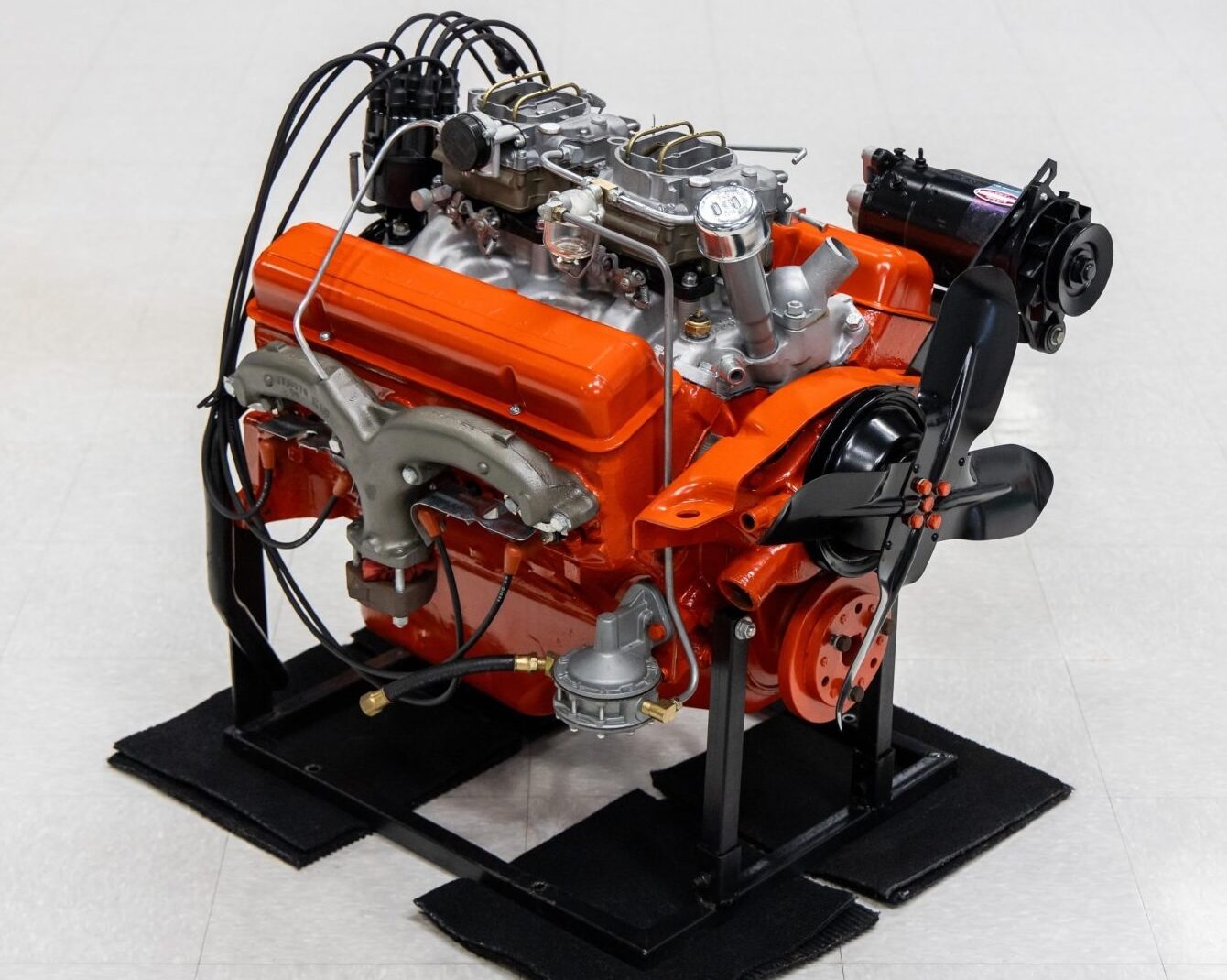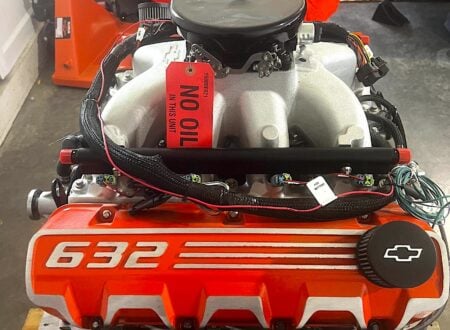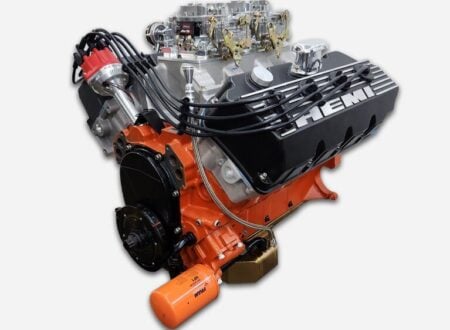This is a Super Turbo-Fire Chevrolet 283 cubic inch (4.6 liter) V8 that was originally built on October the 12th, 1957. More recently it’s been rebuilt with a series of upgrades, and it’s now being offered for sale in unused condition sitting in an engine stand.
The 283 V8 would become one of the most influential early versions of the Chevrolet small block V8, one of the most important engine designs to ever come out of the United States, and an engine family that powered everything from Corvettes to family station wagons.
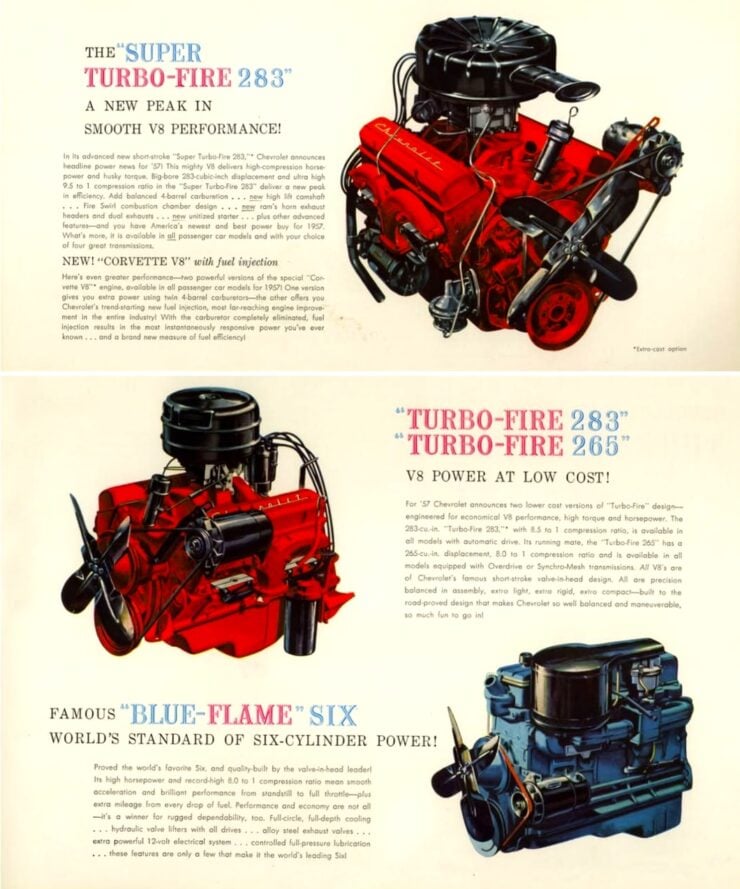

History Speedrun: The Chevrolet 283 Small Block V8
The 283 cubic inch version of the Chevrolet small block V8 was the second act in what would become one of the most influential engine families in American automotive history. Introduced for the 1957 model year, it was a direct evolution of the original 265 small block that had debuted just two years earlier in the 1955 Chevrolet.
Chevrolet engineering chief Ed Cole had been determined to create a compact, light, and powerful V8 that could serve everything from economy sedans to racing cars. The 283 further refined that formula and helped establish Chevrolet’s small block as one of the primary go-to American performance engines for the next two decades.
Chevrolet increased the bore of the earlier 265 V8 from 3.75 inches to 3.875, keeping the same 3.00 inch stroke to reach 283 cubic inches (4.6 liters). This small change yielded a more efficient combustion chamber and room for larger valves and better breathing at higher rpms.
The 283 also introduced an improved cylinder head design and continued the full-flow oil filtration system that had appeared on later 265s – an absolutely critical improvement that improved engine longevity as well as serviceability.
In 1957 Chevrolet offered a number of variants of the 283, ranging from 185 bhp with a two-barrel carburetor to a high-performance “Fuelie” version turning out one horsepower per cubic inch – 283 bhp. That figure was a major milestone for Chevrolet.
While Chrysler had achieved similar power density with the earlier 1956 300B Hemi, the Chevrolet 283/283 became the first Chevrolet production engine to reach that threshold and it was the first mass-market V8 to widely advertise it.
The 283 bhp version was the same engine fitted to the Corvette at the time, helping the fiberglass sports car reach 132 mph and firmly establish its reputation as America’s homegrown rival to European GTs.
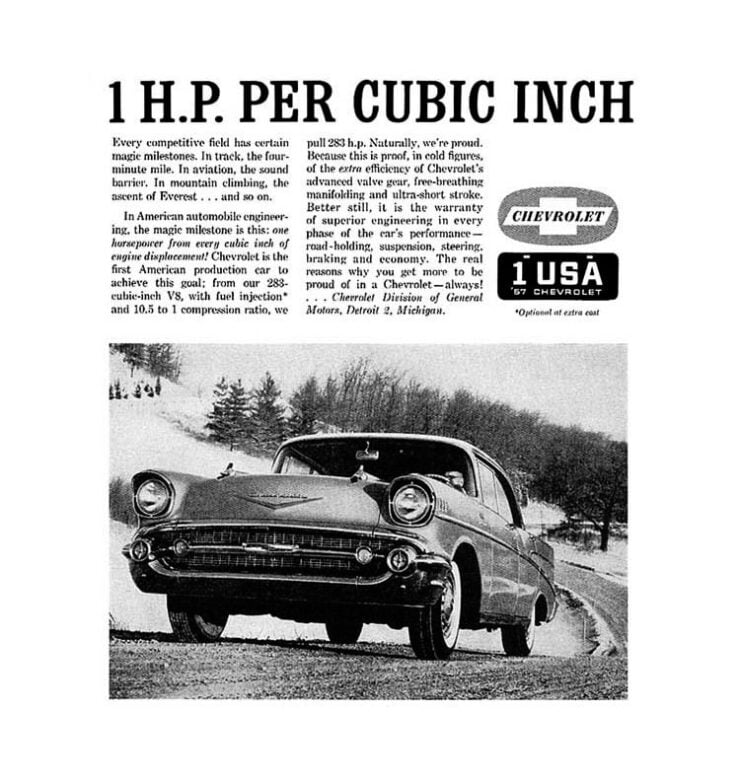

The 283 carried the same engineering DNA that made the Chevy small block V8 famous – a lightweight cast iron block, five main bearings, and a single in-block camshaft actuating the valve rockers via pushrods. The engine was compact, reliable, simple, and inexpensive to build.
The use of thinwall casting kept weight low – only around 575 lbs complete – and made the engine surprisingly easy to package in a huge array of different vehicles. The 283’s valvetrain could use either hydraulic or mechanical lifters – depending on the specification. Hydraulic lifters were typical for regular passenger models, while high-output “Fuelie” and racing versions used solid lifters for higher rpm operation and better, more precise valve control.
By 1958, the 283 had become the backbone of Chevrolet’s powertrain lineup, it appeared in everything from the Impala and Bel Air to the Apache pickup and the Corvette. The Corvette versions offered up to 315 bhp in 1961, while truck variants were tuned for torque, typically around 270 lb ft. Chevrolet also offered a special “Power Pack” version with a four-barrel carburetor and dual exhausts, producing a solid 220 bhp, more than enough for the average family sedan of the time.
The versatility of the 283 was remarkable, it could idle smoothly at 500 rpm yet rev willingly past 6,000 rpm with minimal internal stress. Hot-rodders quickly discovered how easy it was to tune – a better intake, camshaft swap, and/or headers could unlock significant power gains.
The engine’s simple design and enormous parts interchangeability and aftermarket support meant it became the foundation for countless drag cars, stock cars, and boats. It even found its way into midget and sprint cars, where its smaller size and toughness made it a favorite.


In engineering terms the 283 represented the Chevy small block reaching maturity, it refined the casting and lubrication improvements of the 265 and introduced stronger blocks, improved metallurgy, and of course that optional fuel injection system that was arguably ahead of its time. Chevrolet would continue refining the casting process during its production, resulting in stronger blocks and heads as the late 1950s gave way to the 1960s.
Production of the 283 continued through the mid-1960s, with final appearances in the 1967 model year before being replaced by the larger 307 cubic inch small block. In that decade-long run, it had powered millions of Chevrolets and helped shape the performance reputation of the engine family. It also laid the groundwork for the 327, 350, and later small blocks that followed.
The “Super Turbo-Fire” Chevrolet 283 V8 Shown Here
This engine was first built in 1957 (the block was cast in late 1956) at the Tonawanda engine plant, its early life is a bit of a mystery now, but we do know that it was paired with a Powerglide automatic transmission.
More recently the engine has been completely rebuilt, it now has a Duntov 097 camshaft, 0.030″ over domed pistons, solid lifters, a dual-point distributor, and it’s topped with dual Carter WCFB four-barrel carburetors on a cast intake manifold.


This set up essentially recreates the factory dual-quad which was the most powerful carbureted version of the engine at the tome, offering 270 bhp – an impressive figure for a production engine under 5.0 liters in the mid-1950s.
Since it was completed, the engine has been run on a test stand but it’s never been fitted to a vehicle. It’s now being offered for sale on a black stand out of Seekonk, Massachusetts. If you’d like to read more about it or place a bid you can visit the listing here.
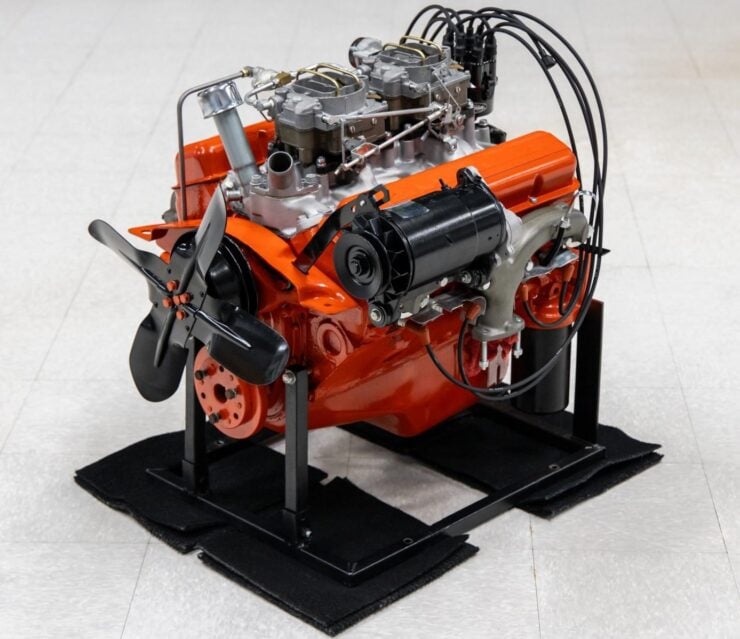
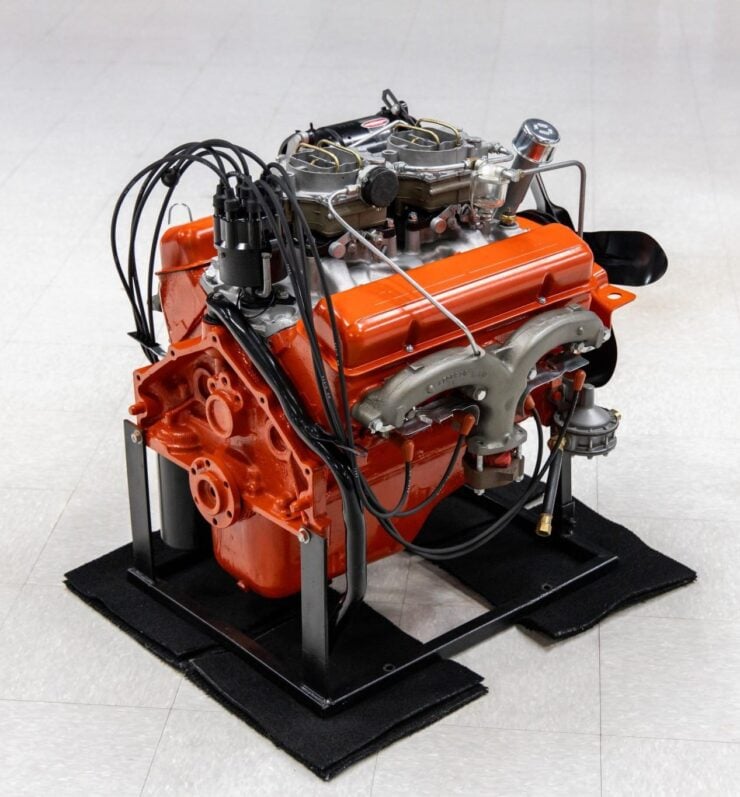

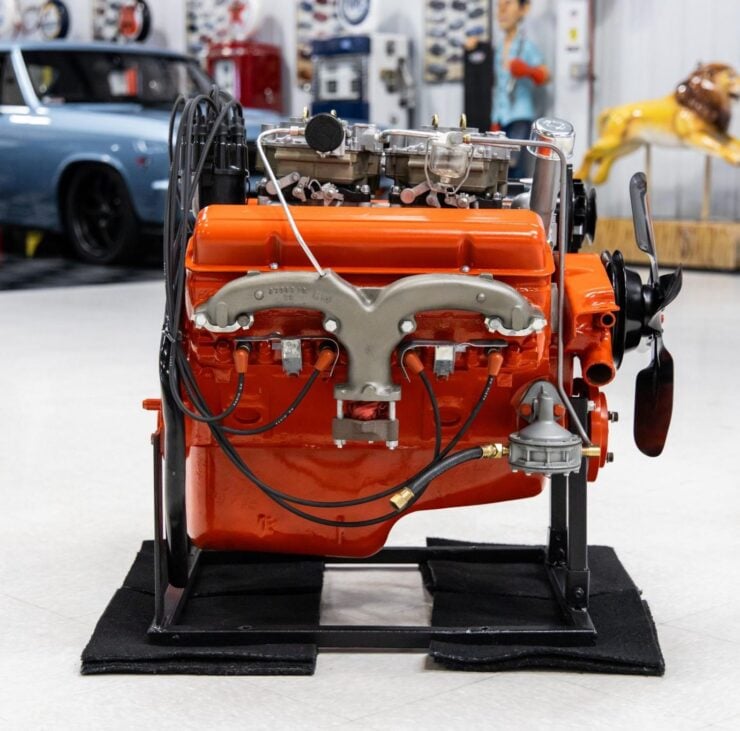
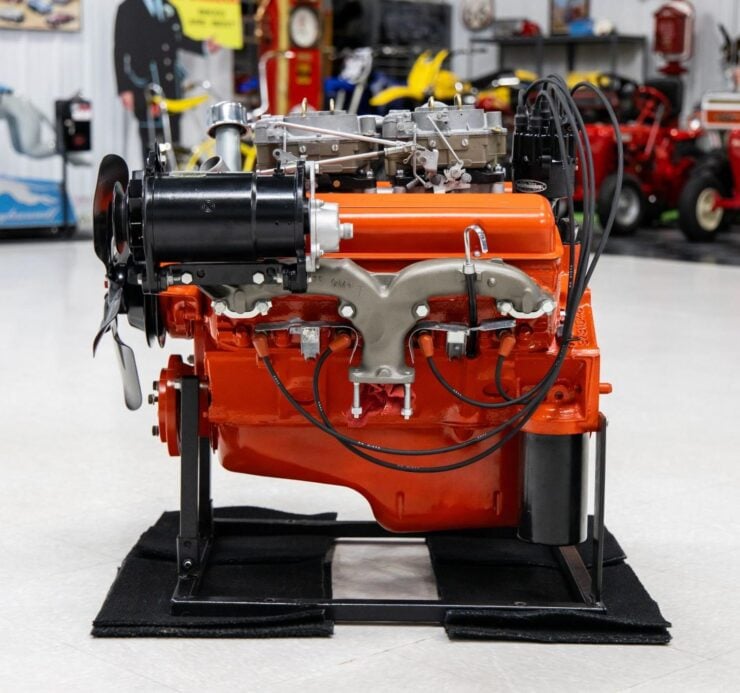
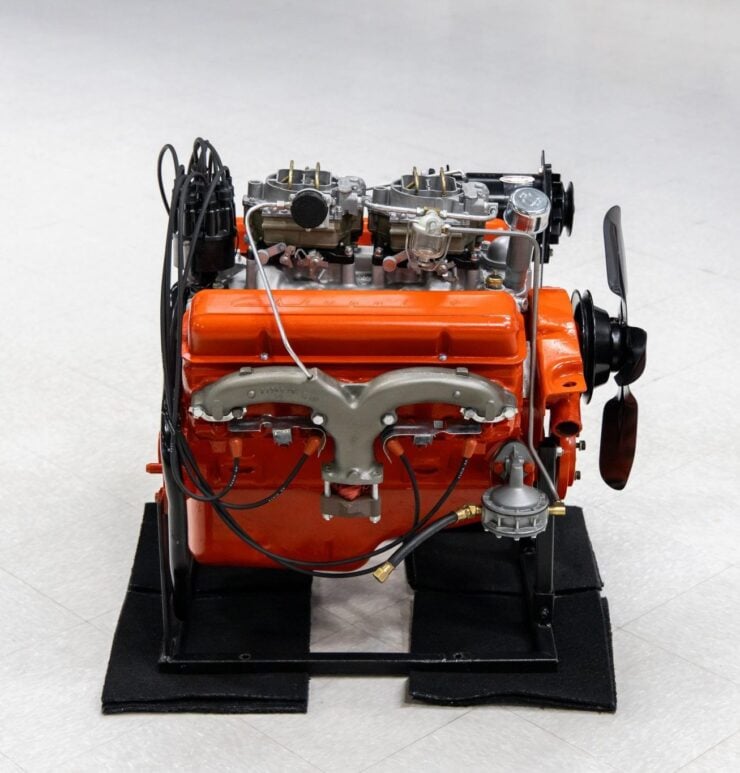
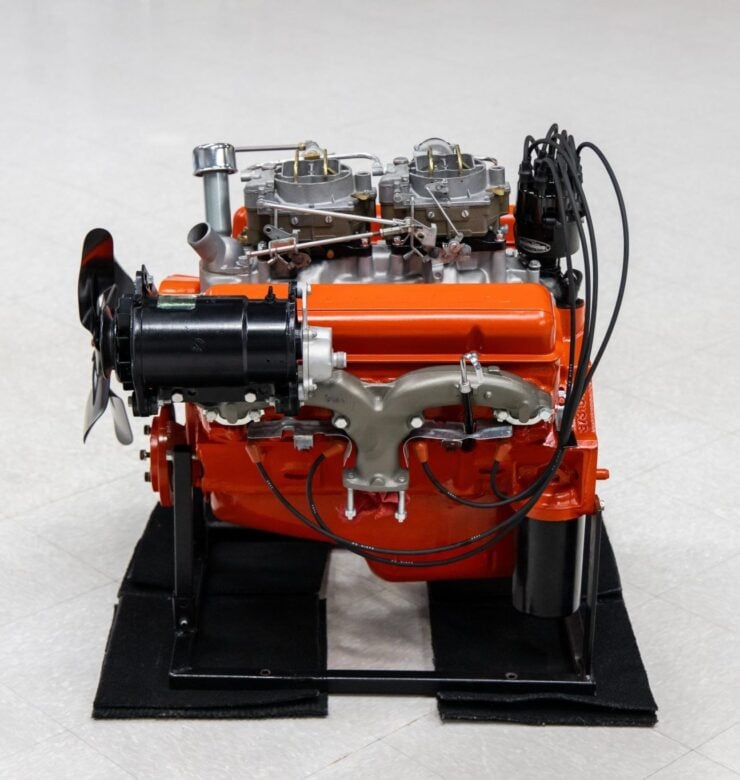
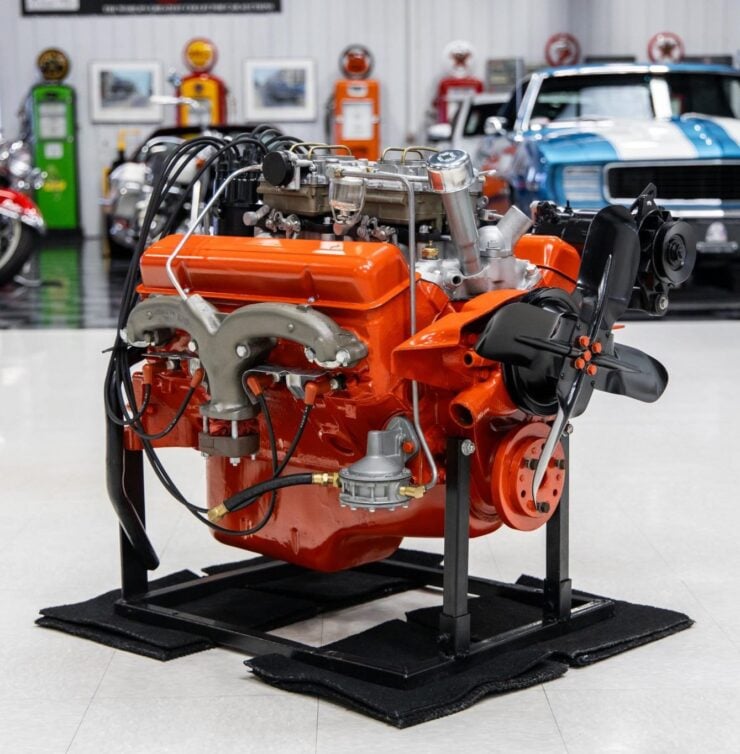
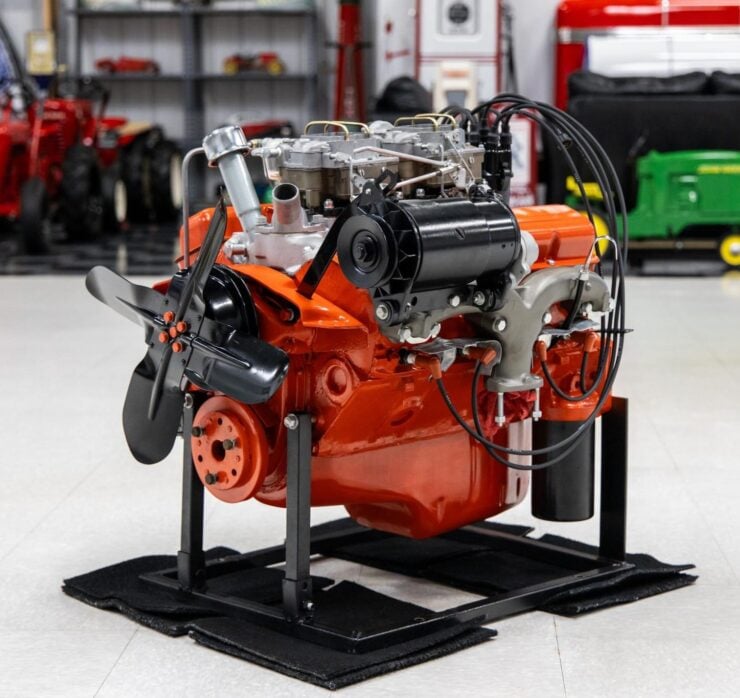
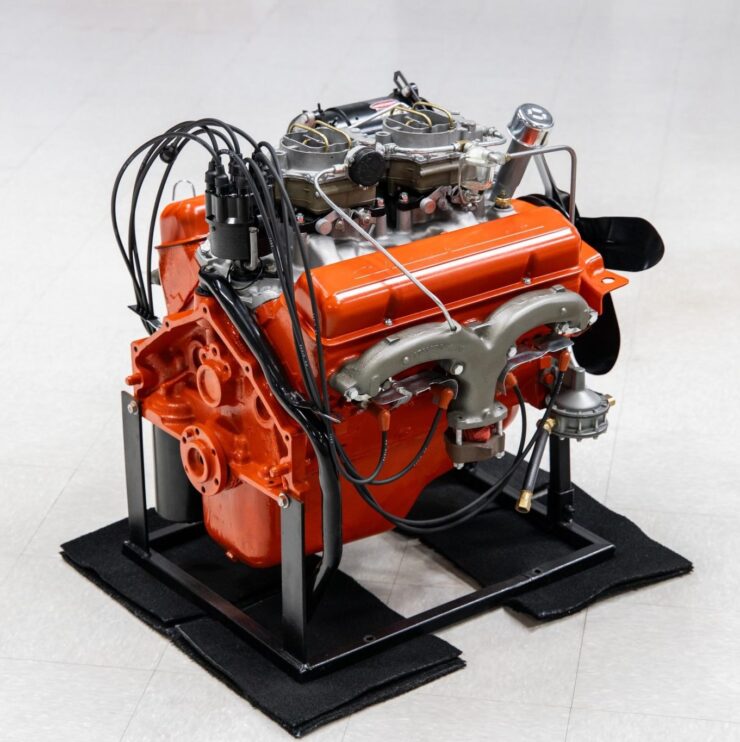
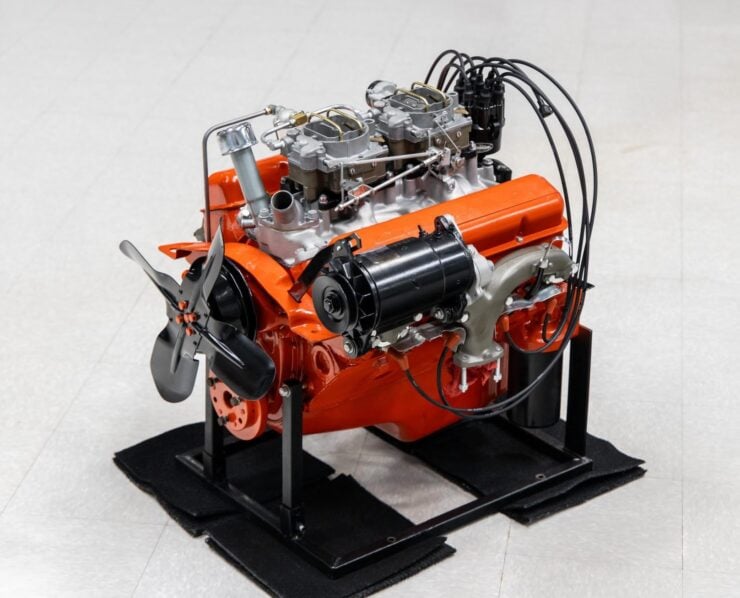
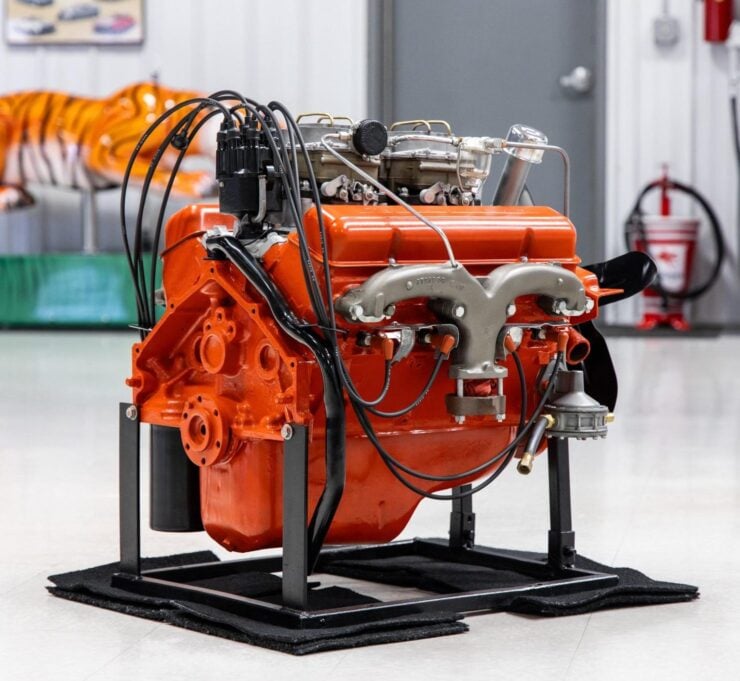
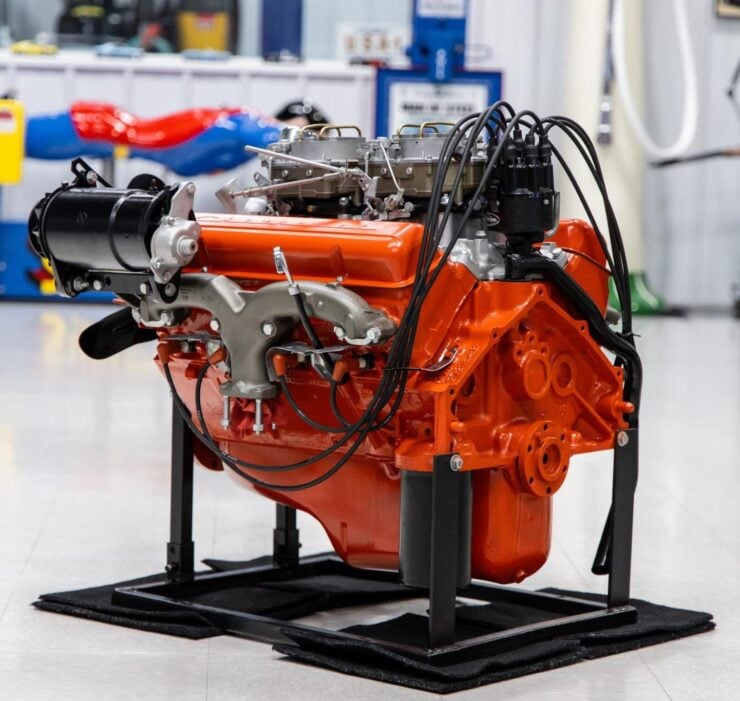
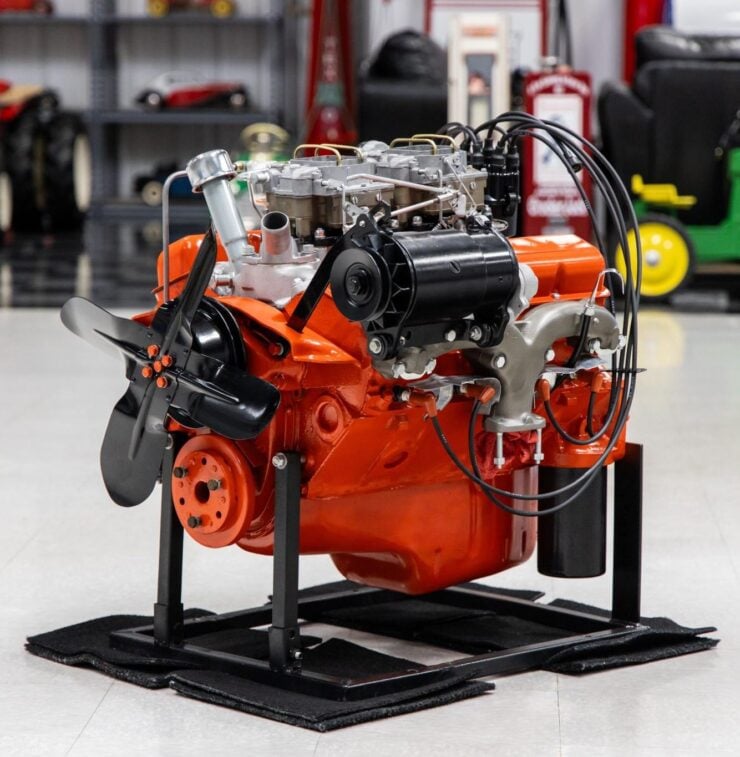
Images courtesy of Bring a Trailer

